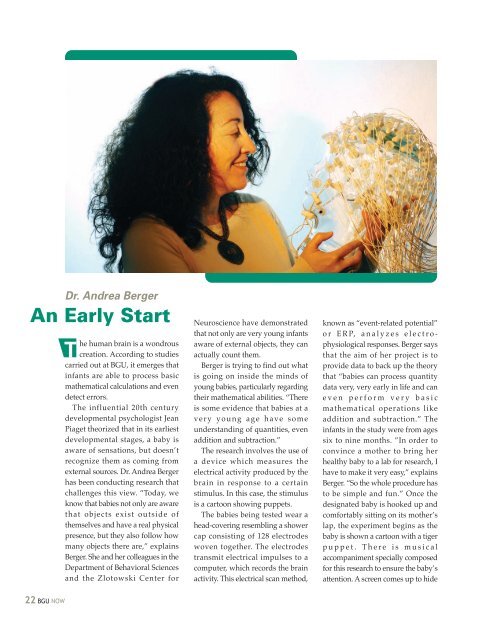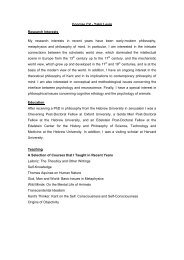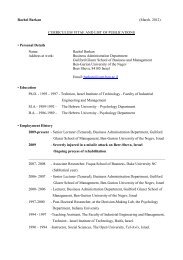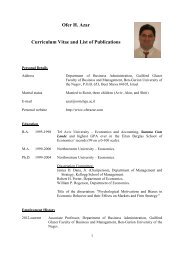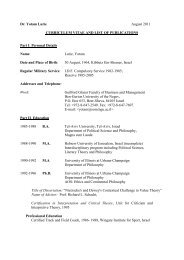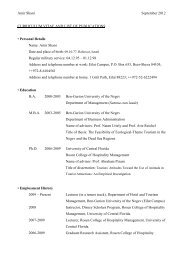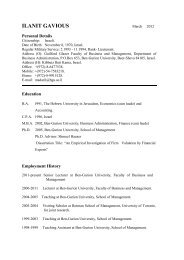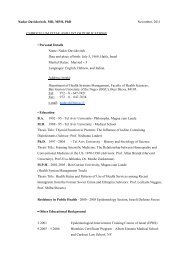cover 2006
cover 2006
cover 2006
Create successful ePaper yourself
Turn your PDF publications into a flip-book with our unique Google optimized e-Paper software.
Dr. Andrea Berger<br />
An Early Start<br />
22 BGU NOW<br />
T<br />
he human brain is a wondrous<br />
creation. According to studies<br />
carried out at BGU, it emerges that<br />
infants are able to process basic<br />
mathematical calculations and even<br />
detect errors.<br />
The influential 20th century<br />
developmental psychologist Jean<br />
Piaget theorized that in its earliest<br />
developmental stages, a baby is<br />
aware of sensations, but doesn’t<br />
recognize them as coming from<br />
external sources. Dr. Andrea Berger<br />
has been conducting research that<br />
challenges this view. “Today, we<br />
know that babies not only are aware<br />
that objects exist outside of<br />
themselves and have a real physical<br />
presence, but they also follow how<br />
many objects there are,” explains<br />
Berger. She and her colleagues in the<br />
Department of Behavioral Sciences<br />
and the Zlotowski Center for<br />
Neuroscience have demonstrated<br />
that not only are very young infants<br />
aware of external objects, they can<br />
actually count them.<br />
Berger is trying to find out what<br />
is going on inside the minds of<br />
young babies, particularly regarding<br />
their mathematical abilities. “There<br />
is some evidence that babies at a<br />
very young age have some<br />
understanding of quantities, even<br />
addition and subtraction.”<br />
The research involves the use of<br />
a device which measures the<br />
electrical activity produced by the<br />
brain in response to a certain<br />
stimulus. In this case, the stimulus<br />
is a cartoon showing puppets.<br />
The babies being tested wear a<br />
head-<strong>cover</strong>ing resembling a shower<br />
cap consisting of 128 electrodes<br />
woven together. The electrodes<br />
transmit electrical impulses to a<br />
computer, which records the brain<br />
activity. This electrical scan method,<br />
known as “event-related potential”<br />
or ERP, analyzes electrophysiological<br />
responses. Berger says<br />
that the aim of her project is to<br />
provide data to back up the theory<br />
that “babies can process quantity<br />
data very, very early in life and can<br />
even perform very basic<br />
mathematical operations like<br />
addition and subtraction.” The<br />
infants in the study were from ages<br />
six to nine months. ”In order to<br />
convince a mother to bring her<br />
healthy baby to a lab for research, I<br />
have to make it very easy,” explains<br />
Berger. “So the whole procedure has<br />
to be simple and fun.” Once the<br />
designated baby is hooked up and<br />
comfortably sitting on its mother’s<br />
lap, the experiment begins as the<br />
baby is shown a cartoon with a tiger<br />
puppet. There is musical<br />
accompaniment specially composed<br />
for this research to ensure the baby’s<br />
attention. A screen comes up to hide


